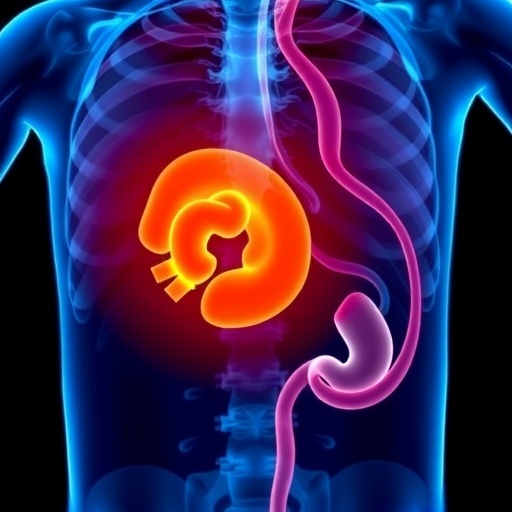SAN FRANCISCO, September 29, 2025 — For patients with intermediate-risk, localized prostate cancer, radiation therapy delivered in five sessions reduced patient-reported side effects compared to longer courses of radiation, according to results of a large, randomized phase III trial. Patients treated with stereotactic body radiation therapy (SBRT) reported fewer declines in bowel, urinary and sexual functioning but were more likely to experience a rise in prostate-specific antigen (PSA). Initial results of the NRG Oncology GU005 trial will be presented today at the American Society for Radiation Oncology (ASTRO) Annual Meeting.
“These findings provide important new evidence to help guide treatment decisions for patients with localized prostate cancer, a disease with typically high cure rates and long life expectancy,” said Rodney Ellis, MD, principal investigator of the trial and a professor of radiation oncology at the University of South Florida/Tampa General Hospital. “The results help clarify what patients can expect from shorter versus longer courses of radiation therapy and enable more personalized treatment decisions based on individual priorities.”
Prostate cancer is the most common solid tumor in male patients. Roughly 70,000 U.S. adults each year are diagnosed with intermediate-risk disease confined to the prostate, for which radiation therapy is a standard treatment option. Historically, patients received external beam radiation in 35 to 45 daily sessions over seven to nine weeks, but research over the past decade has established moderately hypofractionated courses of 20 to 28 sessions over four to six weeks as equally effective.
More recently, investigators have tested whether SBRT, which delivers higher doses in as few as five sessions, can further shorten the course of therapy while maintaining high cure rates. SBRT uses advanced imaging and treatment planning techniques to target tumors with extreme precision, minimizing radiation exposure to nearby organs such as the bladder and rectum. The approach offers practical advantages, including fewer visits, less travel and lower average costs, but it requires specialized technology and expertise that may not be widely available.
The NRG-GU005 trial was designed to test whether SBRT would outperform moderately hypofractionated radiation for both cancer control and patient-reported outcomes. Researchers enrolled 698 patients with previously untreated, intermediate-risk localized prostate cancer across multiple centers internationally from 2017 to 2022.
Participants were randomly assigned to receive either SBRT (36.25 Gy in five fractions, n=353) or moderately hypofractionated intensity-modulated radiation therapy (MH-IMRT, 70 Gy in 28 fractions or 60 Gy in 20 fractions, n=345). Co-primary endpoints combined clinical measures of disease control with patient-reported outcomes collected via questionnaires administered at baseline, 12 months and 24 months after treatment to track whether patients experienced clinically meaningful declines in bowel, urinary or sexual functioning.
Fewer patients treated with SBRT reported a clinically meaningful decline in bowel function at two years (34.9% vs. 43.8% with MH-IMRT, p=0.034). Overall urinary quality of life was equivalent between the groups, but urinary incontinence was less common two years after SBRT (declines for 25.9% vs. 34.7% with MH-IMRT, p=0.023). Sexual function scores favored SBRT at one year (34% vs. 44%, respectively, p=0.026) but were similar at two years (43 vs. 41%, p=0.67).
Regarding disease-free survival, 88.6% of patients in the SBRT group were free from disease progression after three years, compared to 92.1% receiving longer courses of radiation. The difference was driven mainly by higher rates of biochemical failure, or rising PSA after treatment, in the SBRT arm (7.8% vs. 4.2%, p=0.037).
“The PSA findings require careful interpretation,” noted Dr. Ellis. “With treatments involving larger doses per fraction, patients can experience temporary PSA elevations, or ‘benign bounces,’ that resolve over time. We need five-year follow-up to determine whether these elevations translate into actual disease progression.”
The GU005 trial used a lower total SBRT dose than other recent studies (36.25 vs. 40 Gy), which Dr. Ellis said may alternatively explain the higher rate of PSA progression. By comparison, the PACE-B trial, reported at ASTRO in 2023, found equivalent cancer control with the higher dose, though with increased bowel side effects. Longer follow-up from GU005 will help clarify whether the lower dose affects long-term outcomes.
Local recurrence rates did not differ between the arms (1.2% SBRT vs. 1.0% MH-IMRT at 3 years, p=0.97), and three-year overall survival was equally high at 97% in each group (p=0.62). Severe genitourinary complications were rare with either treatment, though less common with SBRT (0.6% vs. 2.5%, p=0.04).
The study also found that rectal spacers, which are gel-like devices that temporarily separate the rectum from the radiation field, appeared to reduce bowel side effects in both treatment groups when used (in 56% of patients on the SBRT arm and 55% on the IMRT arm).
Dr. Ellis said future research will address SBRT’s potential for patients with higher-risk disease and test additional strategies to further reduce side effects while maintaining survival outcomes. For now, he said patients with intermediate-risk prostate cancer have clearer information to guide their treatment decisions: more convenient treatment with better quality of life outcomes, or longer therapy courses with potentially stronger biochemical cancer control.
“Patients have different priorities and values when it comes to their care,” Dr. Ellis noted. “Some may prioritize convenience and minimizing impact on daily life, while others focus primarily on achieving the strongest possible cancer control measures. These results help inform those deeply personal decisions.”
###
This release includes updated study results/data from the authors. Attribution to the American Society for Radiation Oncology (ASTRO) Annual Meeting is requested.
Register here for a news briefing featuring this study on Tuesday, Sept. 30 at 8:00 a.m. Pacific.
Study and Presentation Details
Abstract 1: Primary results from NRG-GU005: A phase III Trial of SBRT vs. hypofractionated IMRT for localized intermediate risk prostate cancer
Session details and virtual meeting link
Dr. Ellis’ bio and disclosures
The NRG-GU005 trial (NCT03367702) was conducted by NRG Oncology with support from the National Cancer Institute and the National Institutes of Health
More information about the meeting can be found in our press kit.
About ASTRO
The American Society for Radiation Oncology (ASTRO) is the world’s largest professional society dedicated to advancing radiation oncology, with 10,000 members including physicians, nurses, physicists, radiation therapists, dosimetrists and other professionals who work to improve patient outcomes through clinical care, research, education and policy advocacy. Radiation therapy is integral to 40% of cancer cures worldwide, and more than one million Americans receive radiation treatments for their cancer each year. For information on radiation therapy, visit RTAnswers.org. To learn more about ASTRO, visit our website and media center and connect with us on social media.
Media Contact
Liz Gardner
American Society for Radiation Oncology
Office: 7032861600
Meeting
American Society for Radiation Oncology (ASTRO) 2025Annual Meeting
Keywords
/Health and medicine/Diseases and disorders/Cancer/Prostate cancer
/Health and medicine/Diseases and disorders/Cancer
/Health and medicine/Clinical medicine/Medical treatments/Cancer treatments/Radiation therapy
/Health and medicine/Clinical medicine/Clinical studies/Clinical trials
/Health and medicine/Medical specialties/Oncology/Cancer patients
/Health and medicine/Medical specialties/Oncology
bu içeriği en az 2000 kelime olacak şekilde ve alt başlıklar ve madde içermiyecek şekilde ünlü bir science magazine için İngilizce olarak yeniden yaz. Teknik açıklamalar içersin ve viral olacak şekilde İngilizce yaz. Haber dışında başka bir şey içermesin. Haber içerisinde en az 12 paragraf ve her bir paragrafta da en az 50 kelime olsun. Cevapta sadece haber olsun. Ayrıca haberi yazdıktan sonra içerikten yararlanarak aşağıdaki başlıkların bilgisi var ise haberin altında doldur. Eğer yoksa bilgisi ilgili kısmı yazma.:
Subject of Research:
Article Title:
News Publication Date:
Web References:
References:
Image Credits:
Keywords
Tags: ASTRO Annual Meeting 2025bowel urinary sexual functioning in cancer patientsintermediate-risk prostate cancer managementlocalized prostate cancer treatment optionsNRG Oncology GU005 trial resultspatient comfort in cancer treatmentpersonalized treatment decisions for prostate cancerprostate cancer diagnosis statistics in the U.S.prostate-specific antigen rise in cancer treatmentradiation therapy side effects comparisonshorter radiation therapy for prostate cancerstereotactic body radiation therapy benefits





